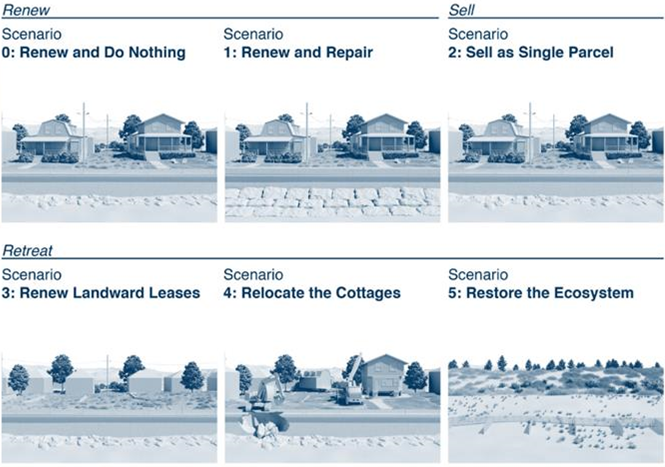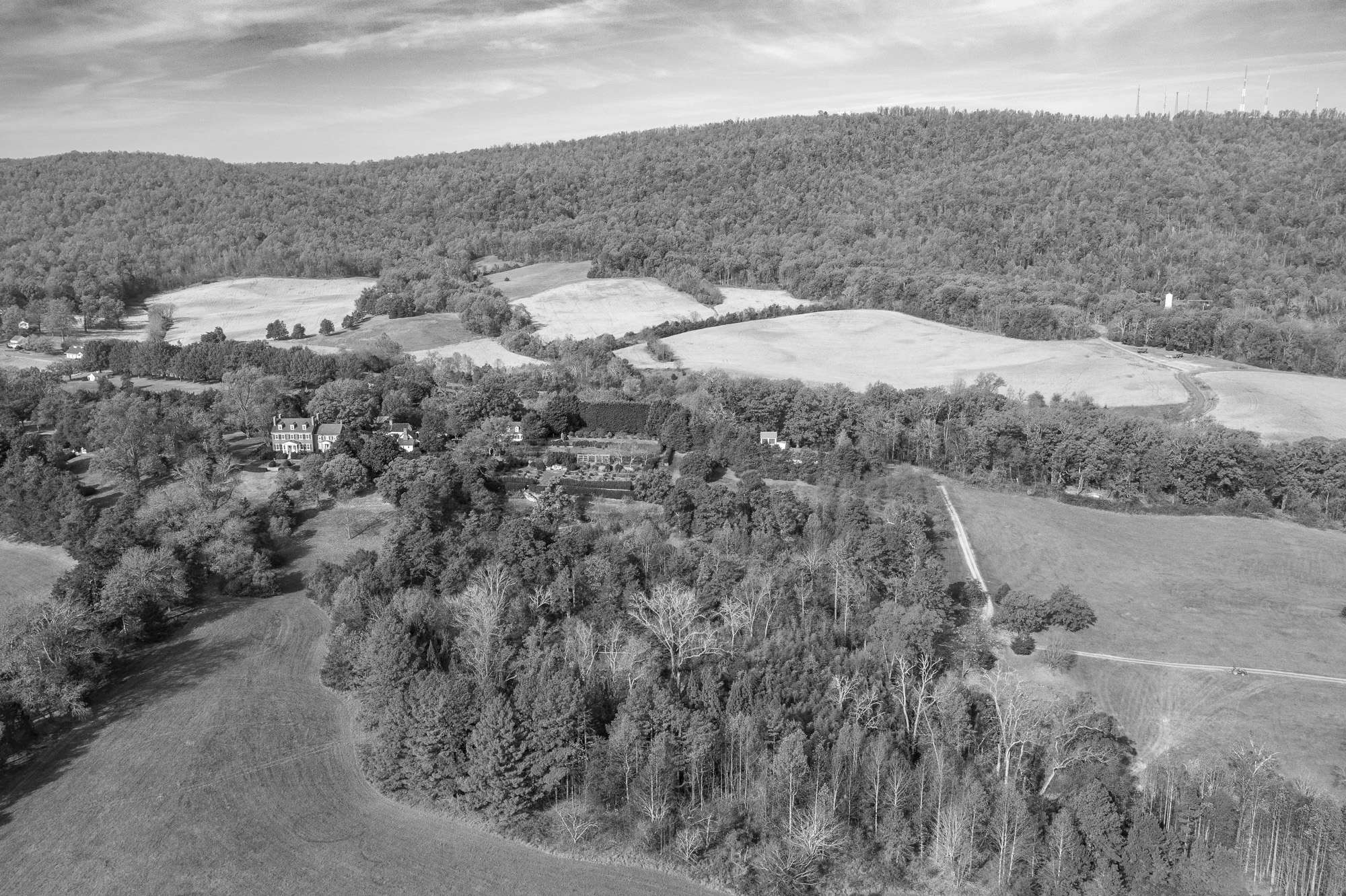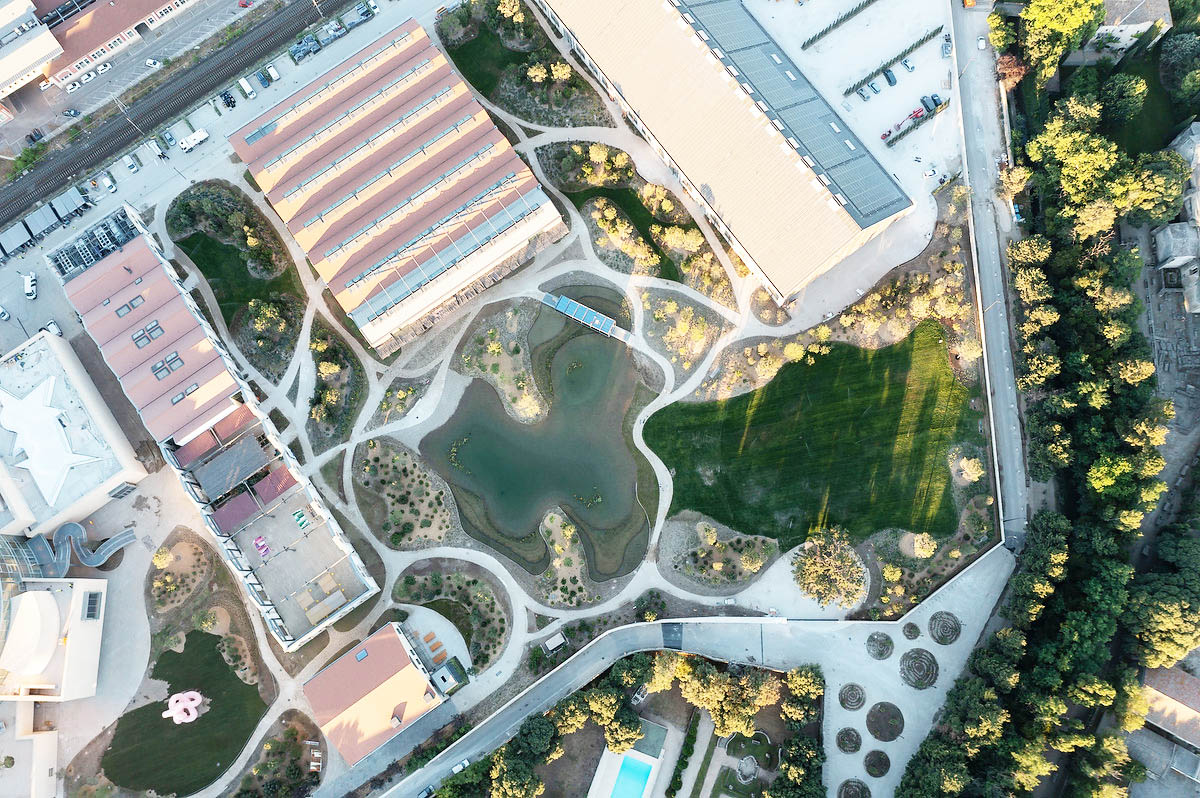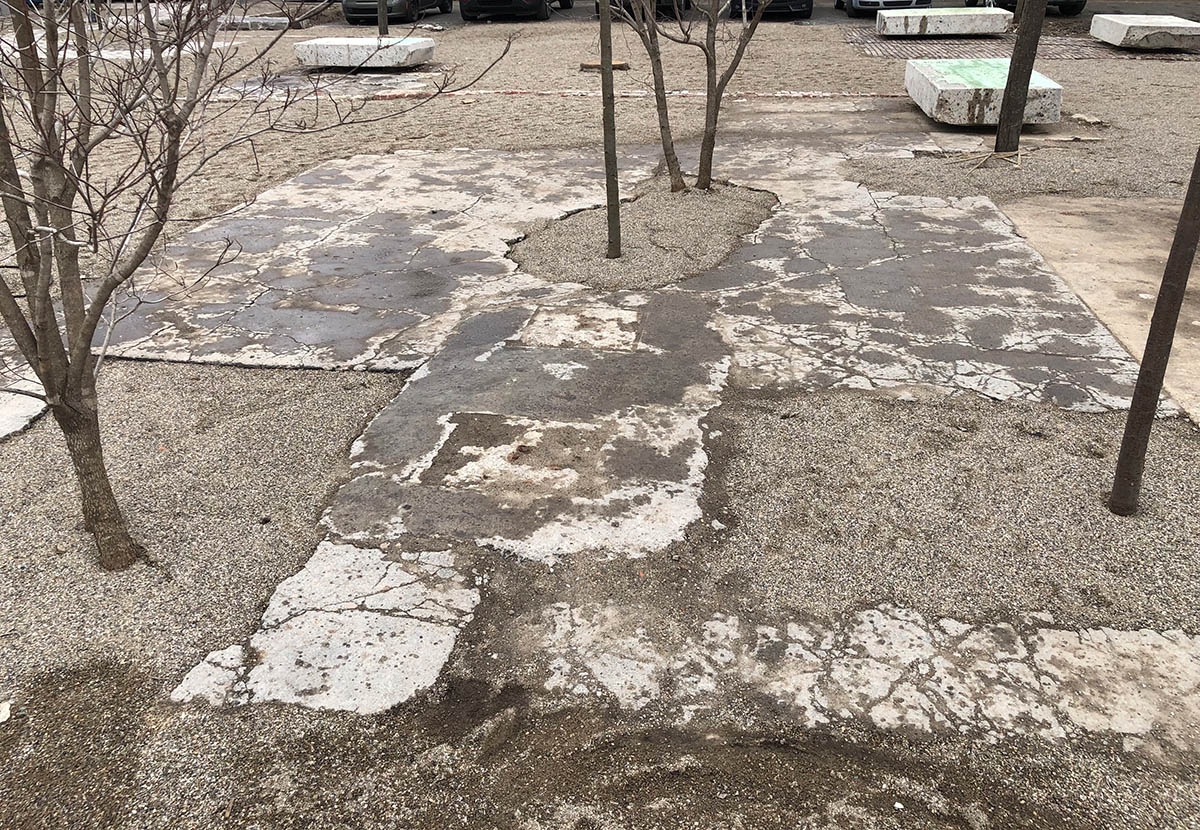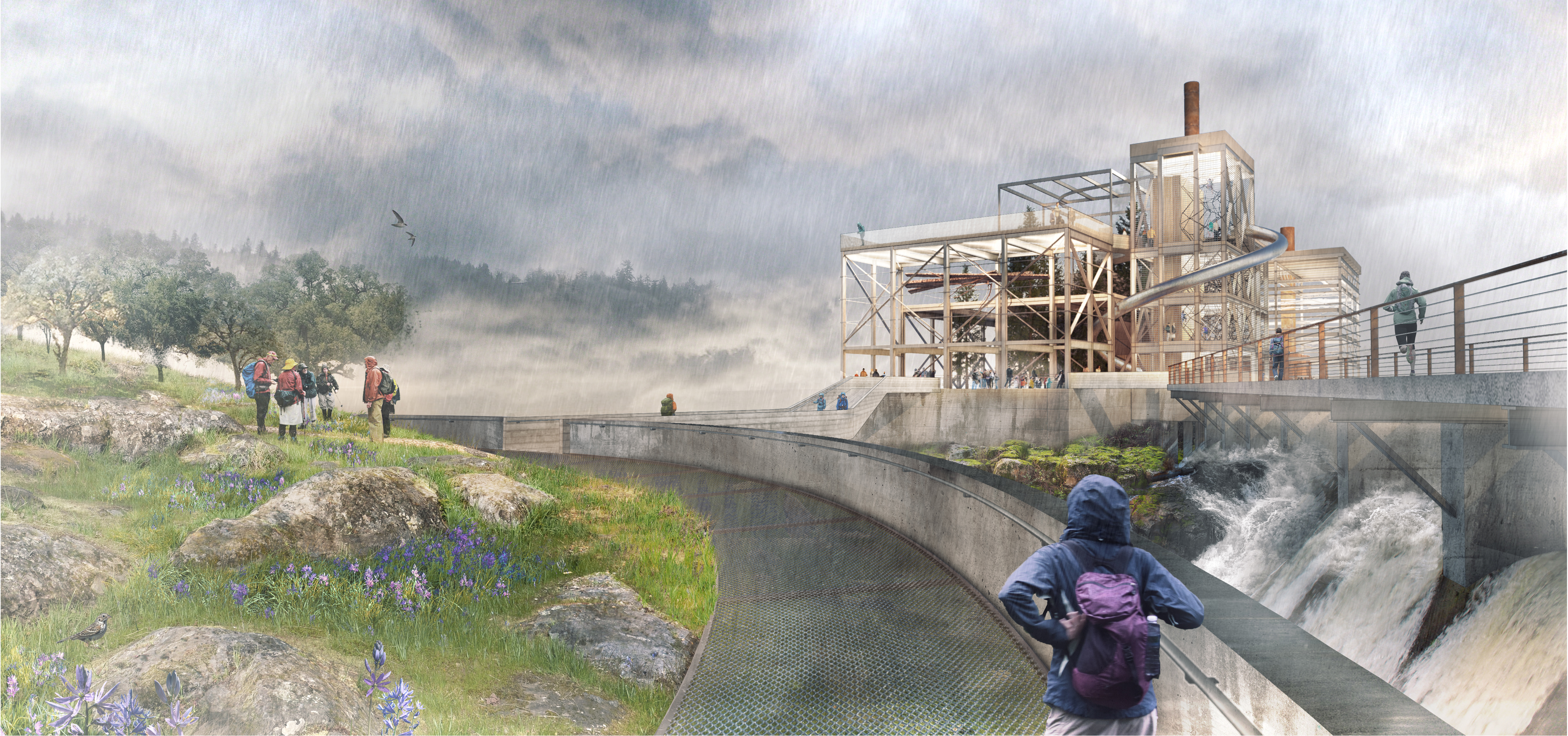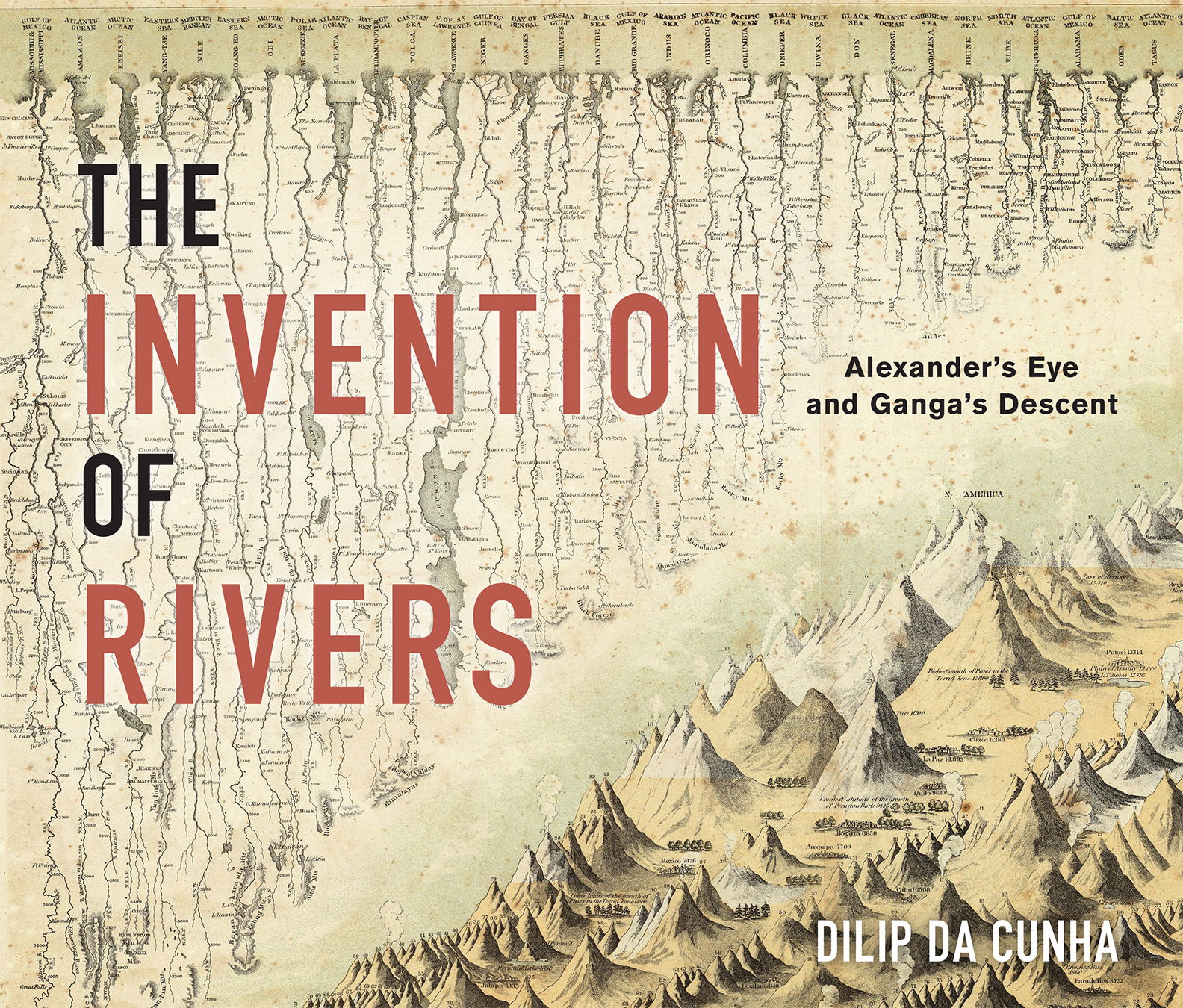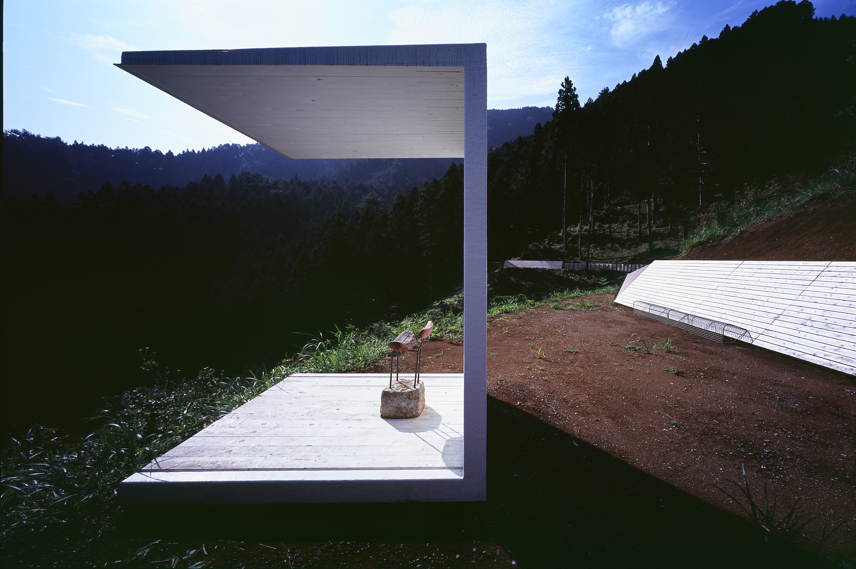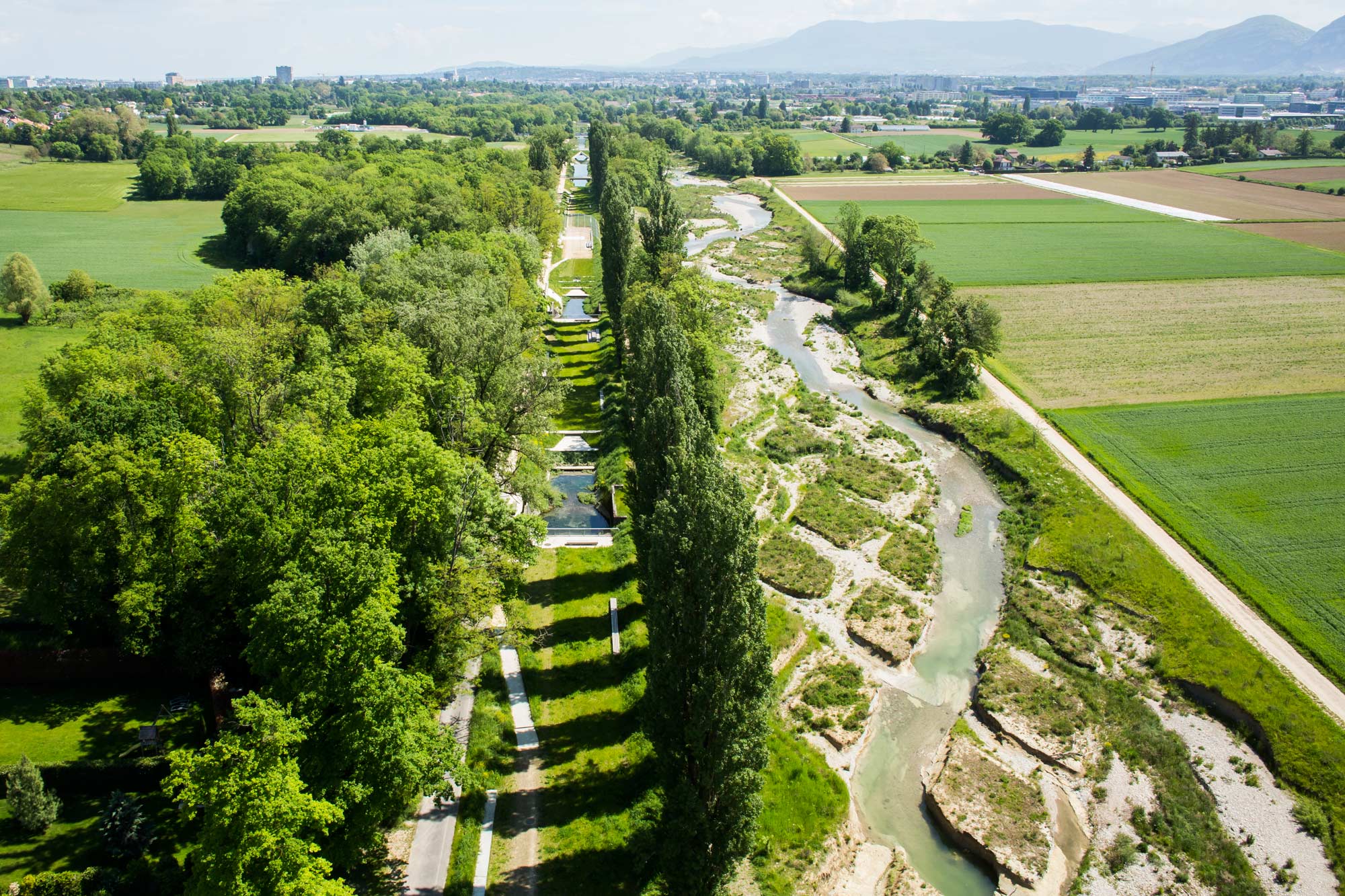Kira Clingen “Place-Based Scenario Planning for the Climate Emergency”
About this Event
Scenario planning evolved out of military intelligence in the 1970s as a tool for corporations to make strategic plans in situations with multiple stakeholders and high degrees of uncertainty. Over the past forty years, the method has diversified across industries and disciplines due to its utility in complex decision making.
Place-based scenario planning is a method of strategic planning that leverages the skill set of landscape architects to assist decision makers choosing adaptation measures to avoid the worst impacts of the climate crisis. Complementary to probabilistic models that forecast future vulnerabilities, scenario planning draws upon scientific data to generate specific, localized future scenarios that reveal existing biases and frame new ways of thinking about the future, leveraging landscape architects’ skills in analysis and visualization to expand their public role.
The talk focuses on a case study of Long Beach, a coastal neighborhood in Rockport, Massachusetts. Illustrating six plausible future scenarios for adaptation within a continuous trajectory of change, the exercise uses design storytelling to celebrate people’s deep attachments to the landscape, elicit tacit knowledge, and build shared climate landscape literacy while planning for the future.
As a tool for practice and a pedagogical approach, place-based scenario planning embraces the multiplicity of narratives and complexities of place, generates diverse approaches to serve the public in the climate emergency, and engages the discipline in critical political and social movements.
Speaker
Kira Clingen is the Daniel Urban Kiley Fellow and Lecturer in Landscape Architecture at the Harvard Graduate School of Design. She is a climate design researcher whose research focuses on place-based scenario planning and visualizing climate futures through speculative fiction. She is also Research Affiliate at the Office for Urbanization at Harvard, where she was the project lead on Compound Vulnerabilities: The Case of Cape Ann, a multi-year scenario planning project looking at regional climate adaptation in coastal Massachusetts.
Kira holds a B.S. in Ecology and Evolutionary Biology and B.A. in Environmental Policy Studies from Rice University. She was a 2016 Thomas J. Watson Fellow, 2021 Planet Reimagined New Futures Fellow, 2023 Aspen Institute Climate Future Leader and is a founding member of the design collaborative APOCATOPIA. Her work has been published in Yale Paprika!, LUNCH Journal, The Plan Journal, and the Plant Humanities Lab at Dumbarton Oaks, among others. She was born, raised, and works on the Gulf of Maine.
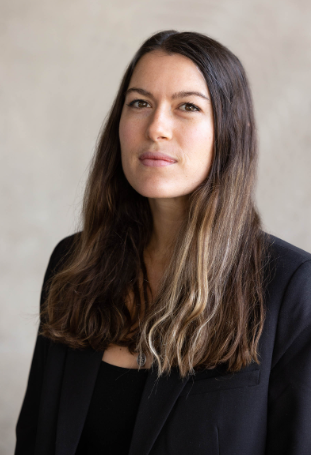
Elizabeth K. Meyer, “Unsettling Sustainability – Landscape Laboratories as Experimental and Experiential Grounds”
Event Description
Meyer, the inaugural faculty director of the University of Virginia’s transdisciplinary Morven Sustainability Lab, will present an overview of how landscape architectural design thinking is at the core of the strategic planning process for this 3000-acre rural landscape on the peri-urban edge of Charlottesville. She will describe how the socio-ecological history of this former plantation and indigenous tribal lands is shaping future research questions, student engagement programs and community collaborations. Additionally, Meyer will share a vision for the Morven Sustainability Lab that positions it within the context of a new generation of landscape labs where landscape architects—working with architects, planners, anthropologists, scientists, and environmental humanities scholars—are co-creating living learning landscapes capable of inspiring a new generation of caring climate activists.
Speaker
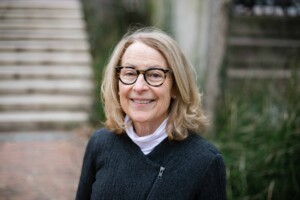
Elizabeth K. Meyer, FASLA, is a landscape architectural professor at the University of Virginia where she has served as Department Chair and Dean of the School of Architecture. First, as a practitioner working with EDAW and Hanna/Olin and consulting with MVVA on sites such as the National Zoo, the GW Parkway, Bryant Park, Wellesley College campus, UVA’s central grounds, the St. Louis Gateway Arch grounds, and the White House Grounds, and since the late 1980s as an academic, Meyer has been involved with cultural landscapes that entangle social histories and ecological processes. Her expertise has been recognized through appointments to the US Commission of Fine Arts and the Dumbarton Oaks Garden and Landscape Studies Senior Fellows. In 2023, Meyer received the Thomas Jefferson Award, the highest scholarly honor bestowed on UVA faculty. For the next four years, as the inaugural faculty director of UVA’s Morven Sustainability Lab , Meyer will lead a multidisciplinary, all-university cohort of faculty, staff, and community members to shape research, teaching, and community engagement programs for a 3000-acre rural property on the periphery of Charlottesville that acknowledge the site’s complicated history while reimagining the site’s future.
Bas Smets, “Biospheric Urbanism”
A recording of this event is available with audio description .
Event Description
The climate crisis poses the urgent challenge to make our urban environment more resilient in the face of unprecedented atmospheric changes such as rising temperatures, intensified rainfall, and longer droughts.
A city can be understood as a sequence of artificial microclimates. Buildings change wind patterns and sunlight exposure, while streetscapes modify soil permeability, runoff, and solar radiation. For each man-made microclimate, a comparable natural condition can be studied. Research on habitats and on the survival strategies of the organisms living within them permits the introduction of plants into artificial urban environments that have similar climatic conditions.
Using the logic of nature, cities can be transformed into complex urban ecologies, blurring the boundaries between the artificial and the natural. Science-based research allows the conception of solution-based projects, revealing our built environment as a network of microclimates in which plants combine the absorption of carbon dioxide with the production of evaporative cooling, simultaneously reducing the source of the problem and mitigating its effects.
The built environment thus becomes a hybrid living organism, lying at the interface between a changing meteorology and an underused geology. Biospheric Urbanism conceives the urban environment as the intersection connecting what lies above and what lies below, using the intelligence of plants.
Speaker
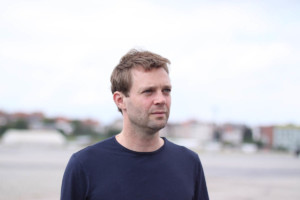
Bas Smets (b. 1975) has a background in landscape architecture, civil engineering and architecture. He founded his firm in Brussels in 2007 and has since completed more than 50 projects in more than 12 countries with his team of 25 architects and landscape architects.
His realised projects include the Parc des Ateliers in Arles, the park of Thurn & Taxis in Brussels, the Mandrake Hotel in London, and the Himara Waterfront in Albania. In 2022 he won the international competition for public space around the Notre-Dame Cathedral in Paris, France.
Each of these projects is part of an interrelated research into the possible role and ambition of landscape projects. The aim is to invent ‘Augmented Landscapes’ by using the logics of nature. These augmented landscapes produce a new microclimate while providing new atmospheres. The collaboration with artists and scientists takes a central role in this research.
A first monographic exhibition was presented in 2013 by deSingel International Arts Center in Antwerp and Arc-en-Reve centre for architecture in Bordeaux. Bas Smets has received numerous honours and awards, among which the Award for Urbanism and Public Space from the French Royal Academy of Architecture and the Aga Khan Award for Architecture.
Julie Bargmann, “Modesty”
The GSD’s Spring 2021 Public Programs are all virtual and require registration.
Click here to register for Julie Bargmann, “Modesty.”
Scroll down to find complete registration instructions and additional information about accessing the GSD’s programs.
Event Description
Toxic Beauty. Troubled Allure. Fallow Fairness. Not Vacant, Open. Not Abandoned, Changing.
D.I.R.T. cultivates a perverse attraction and an unapologetic approach to wrecked landscapes.
Not Restorative, Regenerative.
The work holds back. It doesn’t make everything perfectly okay. The work listens. It hears them above trying to make sense, below the ground producing heritage. The work hurts. It flips preconceptions of stuck minds. The work is messy. It’s all about finding. The work emerges.
It doesn’t descend. The work leaves. It lets you in.
Modesty is a Manifesto calling for restraint when we don’t know what’s next.
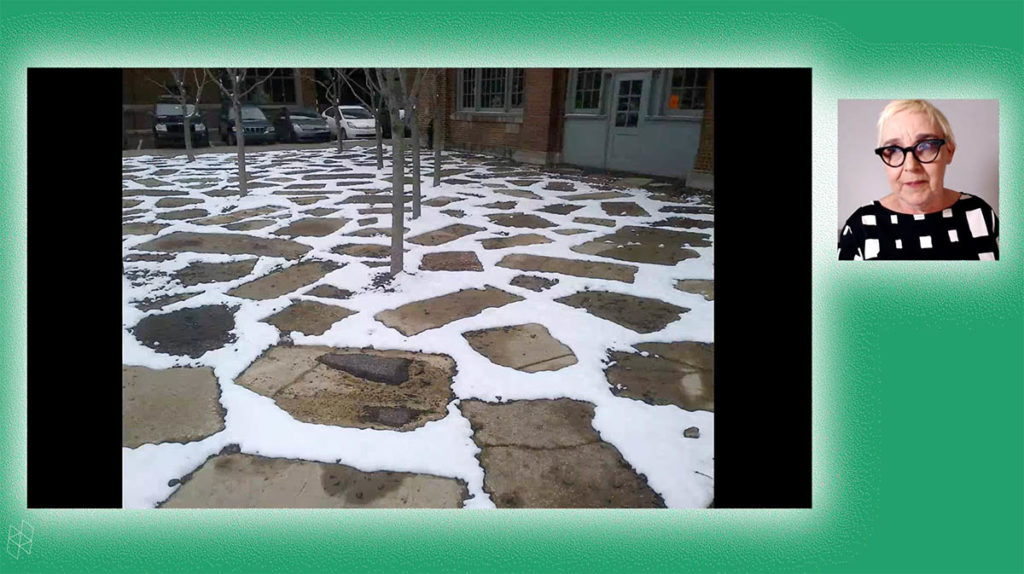
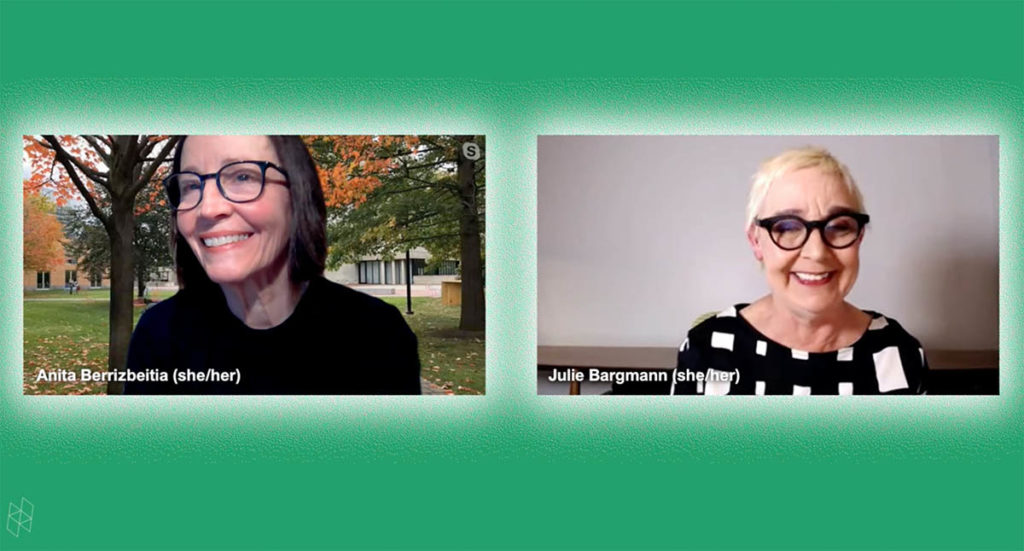
Speaker
Julie Bargmann, MLA ’87, is internationally recognized as an innovative designer in building regenerative landscapes. She founded D.I.R.T. studio in 1992 to research, design and build projects with passion and rigor. Born and raised in New Jersey, where from an early age the belching factories and monumental landfills attracted her, Julie is a straight-talker, not afraid to provoke in order to tease out what matters most about places, especially the post-industrial. Her background in sculpture influences the use of simple form that emerges from sites’ existing, unearthed and unlikely material for design. Julie’s frank, hands-on design approach informs her role as Professor at the University of Virginia, where she leads investigations with students into derelict terrain, imagining renewed sites of cultural and ecological production.
Julie earned a fine arts degree from Carnegie-Mellon University and a Master of Landscape Architecture degree at the Harvard Graduate School of Design. She received the American Academy in Rome Fellowship and the Cooper Hewitt, Smithsonian Design Museum’s National Design Award. D.I.R.T. projects have gained several Honor Awards from the American Society of Landscape Architects, and Detroit’s Core City Park garnered the October 2020 cover story in Landscape Architecture.
How to Join
Register to attend the lecture here . Once you have registered, you will be provided with a link to join the lecture via Zoom. This link will also be emailed to you.
The event will also be live streamed to the GSD’s YouTube page . Only viewers who are attending the lecture via Zoom will be able to submit questions for the Q+A. If you would like to submit questions for the speakers in advance of the event, please click here .
Live captioning will be provided during this event. A transcript will be available roughly two weeks after the event, upon request.
Michelle Delk
Michelle Delk is a passionate champion and designer of the urban public realm. Based in New York City, Michelle is a Partner and Landscape Architect with Snøhetta. Her work is trans-disciplinary, evocative, and representative of a simple foundational premise shared with Snøhetta: to create places that enhance the positive relationships between people and their environments. Both aspirational and pragmatic, her work reveals and complements the sublime qualities of embedded beauty and rational functionality within the constructed environment.
Michelle’s enthusiasm is reflected in her commitment to design and leadership within her firm and community. She is an active board member for the Urban Design Forum in New York City, a member of The Cultural Landscape Foundation’s Stewardship Council, and lectures at conferences, universities, and communities throughout the world. Since 2001, her range of work around North America spans from small urban plazas to public parks and large-scale master plans. Currently, she leads several efforts with Snøhetta, including the design of the Willamette Falls Riverwalk in Oregon, a transformation of a 22-acre post-industrial site; as well as a re-imagining of the 20-acre Blaisdell Center in Central Honolulu; and the re-imagined design of a significant public plaza in midtown Manhattan.
This program is supported by the Daniel Urban Kiley Lecture Fund
Dilip Da Cunha, “The Invention of Rivers”
Separating land and water is not just an act of division; it is also an act of creation. It creates land and water from ubiquitous wetness, defining them on either side of a line. It is one of the first acts of design, setting out a ground of habitation with a line that has largely been naturalized in features such as the coastline, the riverbank, and the water’s edge. These features are subjected to artistic representations, scientific inquiry, infrastructural engineering, and landscape design with little awareness of the act that brought them into being. Today, however, with the increasing frequency of flood and, not unrelatedly, sea-level rise attributed to climate change, the line of separation has come into sharp focus with proposals for walls, levees, natural defenses, and land retirement schemes. These responses raise questions on where the line is drawn, but they also raise questions on the separation that this line facilitates. Is this separation found in nature or does nature follow from its assertion? Are there other beginnings to design and consequently, other possible natures and grounds of habitation?
Dilip da Cunha is an architect and planner based in Philadelphia and Bangalore. He is co-director of the Risk and Resilience program at the Graduate School of Design, Harvard University, and Adjunct Professor at the GSAPP, Columbia University. He is author with Anuradha Mathur of Mississippi Floods: Designing a Shifting Landscape (2001); Deccan Traverses: The Making of Bangalore’s Terrain (2006); Soak: Mumbai in an Estuary (2009); and Design in the Terrain of Water (2014). His new book, The Invention of Rivers: Alexander’s Eye and Ganga’s Descent, was just published by the University of Pennsylvania Press. In 2017, da Cunha along with Anuradha Mathur received a Pew Fellowship Grant in recognition of their collaborative work. They are currently working on a multimedia exhibition titled The Ocean of Rain. http://www.mathurdacunha.com
Da Cunha’s The Invention of Rivers: Alexander’s Eye and Ganga’s Descent is available for purchase through University of Pennsylvania Press (http://www.upenn.edu/pennpress/book/15913.html).
Toru Mitani
Is there any essential difference between the detail design of landscape architecture and of architecture? It is very common to discuss detail design in the architectural realm, as evidenced by a number of research works and publications focusing on the rationality and logics of the wooden structure of traditional Japanese architecture that praise its beauty. On the other hand, it is not so easy to find any discussion of detail designs of the traditional gardens in Japan, because most focus on the semantics and symbolization of their style. For example, the stone formation in the dry garden has been explained from the viewpoint of Buddhist symbolization or sometimes of the spiritual representation, and not from the viewpoint of its functional, structural reason, in other words, as a matter of engineering.
Japan-based landscape architect Toru Mitani discusses these and other considerations with reference to the concurrent GSD exhibition featuring his ongoing work and collaborative projects with his firm ‘studio on site.’
Please join us in the Gund Lobby immediately following Toru Mitani’s lecture for a reception to celebrate his exhibition Landscape: A Fabric of Details.
João Nunes
João Nunes is full Professor at the Architecture Academy of Mendrisio, and serves as Director of the Milan branch of the Master in Landscape Architecture program at the the Universitat Politecnica de Catalunya in Barcelona. In 2013 he was the first recipient of the Adalberto Libera Excellence Chair for Architecture [Trento University -Italy]. He is the founder and CEO of the Landscape Architecture Studio PROAP, which aims to work and research landscape through a multidisciplinary team and approach.
PROAP is a Landscape Architecture Studio, based in Lisbon, with agencies in Italy, Angola and local partners in China and Brazil. The work of the Studio ranges from landscape projects and studies, urban design, strategic landscape planning. PROAP became internationally known during the Lisbon Expo in 1998 for the Tejo Park and, since then, has realized projects in Portugal (Ribeira das Naus, Mondego Park, Cava do Viriato), Belgium (Antwerp Waterfront), Switzerland (Promenade des Crétes, PAV Etoile), Lebanon (Khan Antoun Bey Souk), Italy and Luxembourg.
Landscapes of memory, landscapes of forgetfulness
We are artisans of memory.
We are constructors of Future.
Landscapes are records of time.
As formidable books where, page after page, moment after moment, all the signs of the world are inscribed.
All the marks imprinted by the mechanisms which perform in the world, from footprints to atomic explosions, from gardens to cities, from minor walls to massive bridges.
That is the constructive process of landscape, the record, the keen continuous acceptance of imprints throughout the world, the process of combining them, of blending them, of, with them, producing something else altogether. And to recombine them again, sewed together in active metabolisms.
And if, in each moment, we are interested in the Image manifestation of that process, the spatial expression of that metabolism, the physiognomy in which that process consecrates, in that precise moment of our interest, it should interests us (as conscious actors of the process itself, as deciders of the evolution of that process, summarily, as architects) to know the rules of its functioning, the parameters of the mechanisms which draw them, the metabolic relations which constitute them.
As such, we recognize in each stone, in each form of the Earth, the echoes of the geological memory which shaped them, the imprints of the erosion mechanisms which have sculpted them, the remains of plants which have inhabited them, the records of animal footprints which have crossed it, and the men which, before us, have transformed it time and time again.
Landscapes are thick memories of Time and they are filled with Future, pregnant with the information that the mutations added throughout that time; they are the complex record of a transformation that describes, in each moment, what a landscape was and what presently is, what it possesses and, yet secretly, the sketch of the embryo of what shall be.
A codified genetic record which is not encapsulated in a synthetic determinism of a DNA, on the contrary, it is continuously written, vaguely conducted, remotely free, subliminally random, fulfilling, in each moment, the vacant instant between the Past and the Future.
And , in each layer of that thick time, there will be the condemnation to build, coherently, the continuity in that time.
Remembering or forgetting, celebrating or burying, consecrating or erasing, in the history of that construction, are the severe decisions to take in each moment.
In each gesture, in each day, in each project.
If Space and Time are the matter of landscape construction, Memory and Forgetfulness are the tools to its continuous transformation.
And the decision, conscious or not, of what to remember and what to forget, the continuous management of our memory, personal and collective, is the equation of the construction of the time line which appears inevitable and unique, but that is only one of the many possible paths between past and future.
A construction, a building, with every casual and random element which, in time, is configured.
And we cross, hesitant as blind men, the halls of that building, driven by the choice to remember or to forget, by the need to remember or to forget, cartesianly located in each moment of Time by that choice which draws, in the same selective manner, a Past and a Future.
For accessibility accommodations, please contact the events office in advance at [email protected] or (617) 496-2414.
Adriaan Geuze
As a cofounder of West 8, Adriaan Geuze has established an international reputation based on a unique approach to design, relating contemporary culture, urban identity, architecture, public space, and engineering in the individual project, always taking the context into account. With an international team of 70 architects, urban designers, landscape architects and industrial engineers, West 8 has implemented projects such as Schouwburgplein in Rotterdam, Governor’s Island in New York, Madrid Rio, and Miami Beach SoundScape Park. The Daniel Urban Kiley Lecture is an annual honorific lecture on landscape. For accessibility accommodations, please contact the events office two weeks in advance at (617) 496-2414 or [email protected]. Principal Speaker: 1938Georges Descombes, “Designing a River Garden”
Beginning in the late nineteenth century, the Aire River, which runs northeast into the Rhine, was progressively canalized near Geneva, where it flows through valleys historically devoted to farming. In 2001, the State of Geneva opened a competition with the idea of restoring the Aire to its original shape and meanders by eliminating the canal. Atelier Descombes Rampini proposed instead, in their winning entry, to combine the clear territorial cut of the canal with a parallel new vast divagation space for the river. In the process, as Georges Descombes stated in the proposal, “the canal becomes the pointer for the transformations, a reference line giving the possibility to understand the ‘before’ and ‘after’—a becoming which superimposes both situations” and accepts that “something began which was already there.”
The design’s complex organization links the new river space to a linear series of gardens in the former canal. The realized design has become a long linear garden that organizes the views in a true Einsensteinian montage, aiming at introducing into this territory “shocking” juxtapositions intended to prompt “questions, worries, hopes” that will renew attention and emotion.
Among Descombes’s architectural realizations are the Swiss Path around Lake Uri in Switzerland, the Bijlmer Memorial in Amsterdam, and Parc de la Cour du Maroc in Paris. The Aire River project was awarded the Schulthess Swiss Gardens Prize in 2012, was named Best Swiss Landscape Architecture Project of the Year in 2015, and is a finalist for the 2016 Rosa Barba Landscape Prize.
